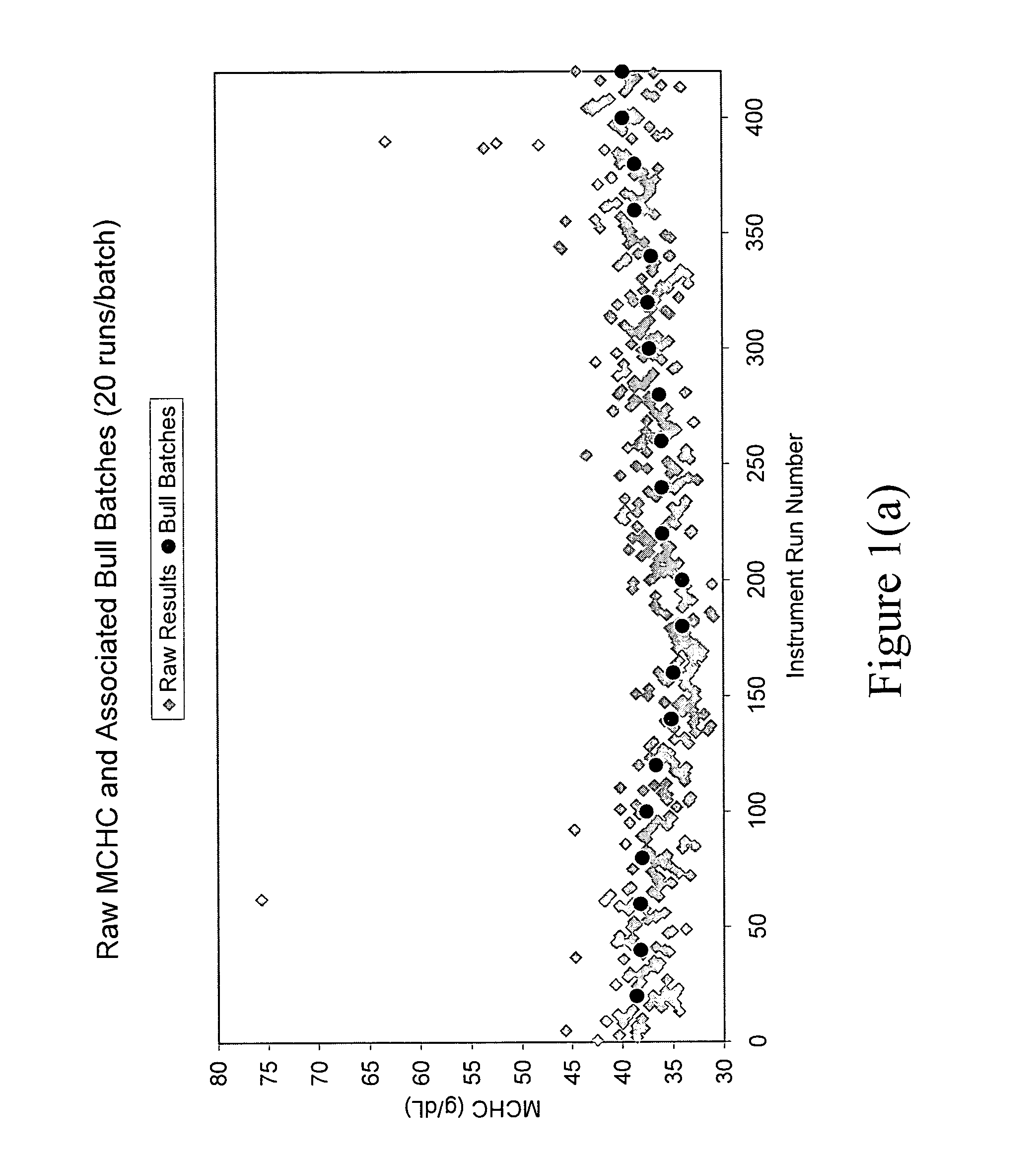Automated calibration method and system for a diagnostic analyzer
a diagnostic analyzer and automatic calibration technology, applied in the field of diagnostic instruments, can solve the problems of very high cost of the market, and achieve the effect of reducing the impact of single sample variation on batch results
- Summary
- Abstract
- Description
- Claims
- Application Information
AI Technical Summary
Benefits of technology
Problems solved by technology
Method used
Image
Examples
Embodiment Construction
[0052]A preferred form of the method of the present invention, and system implementing the method, will now be described. In accordance with one form of the present invention, an automated method for calibrating in real time a diagnostic analyzer, such as a hematology analyzer, preferably includes the steps of receiving the diagnostic (e.g., hematology) results of patient samples calculated by the analyzer using the analyzer's pre-set parameters (such as optical gain, for example), and applying a weighted moving averages algorithm to the patient sample diagnostic results to obtain weighted averaged diagnostic results. The method further includes the steps of applying control chart rules to the weighted averaged diagnostic results, and creating from the control chart rules limits or ranges which are used to test the extent to which the weighted averaged diagnostic results reside within such limits or ranges. The method further includes the steps of comparing the weighted averaged dia...
PUM
 Login to View More
Login to View More Abstract
Description
Claims
Application Information
 Login to View More
Login to View More - R&D
- Intellectual Property
- Life Sciences
- Materials
- Tech Scout
- Unparalleled Data Quality
- Higher Quality Content
- 60% Fewer Hallucinations
Browse by: Latest US Patents, China's latest patents, Technical Efficacy Thesaurus, Application Domain, Technology Topic, Popular Technical Reports.
© 2025 PatSnap. All rights reserved.Legal|Privacy policy|Modern Slavery Act Transparency Statement|Sitemap|About US| Contact US: help@patsnap.com



